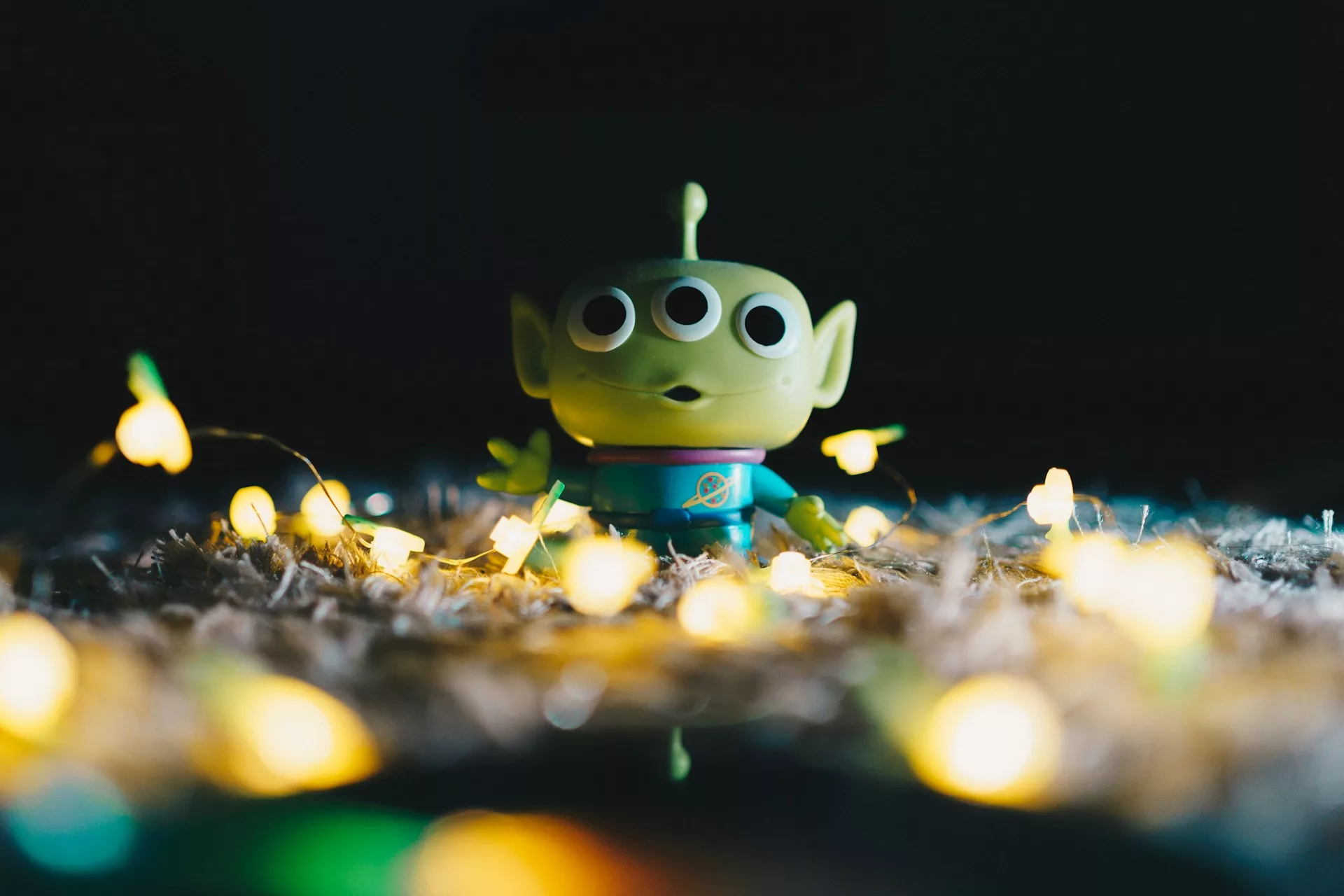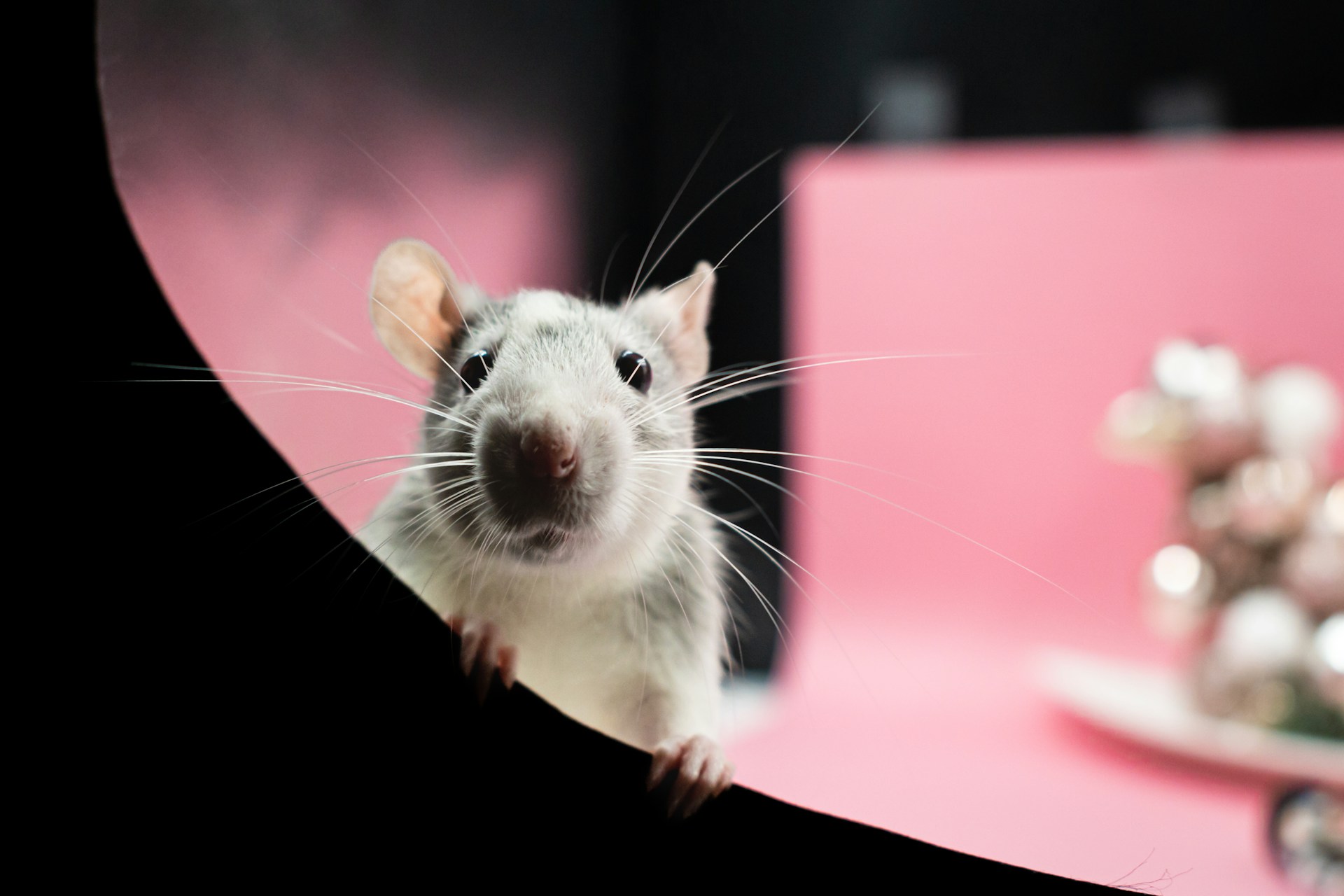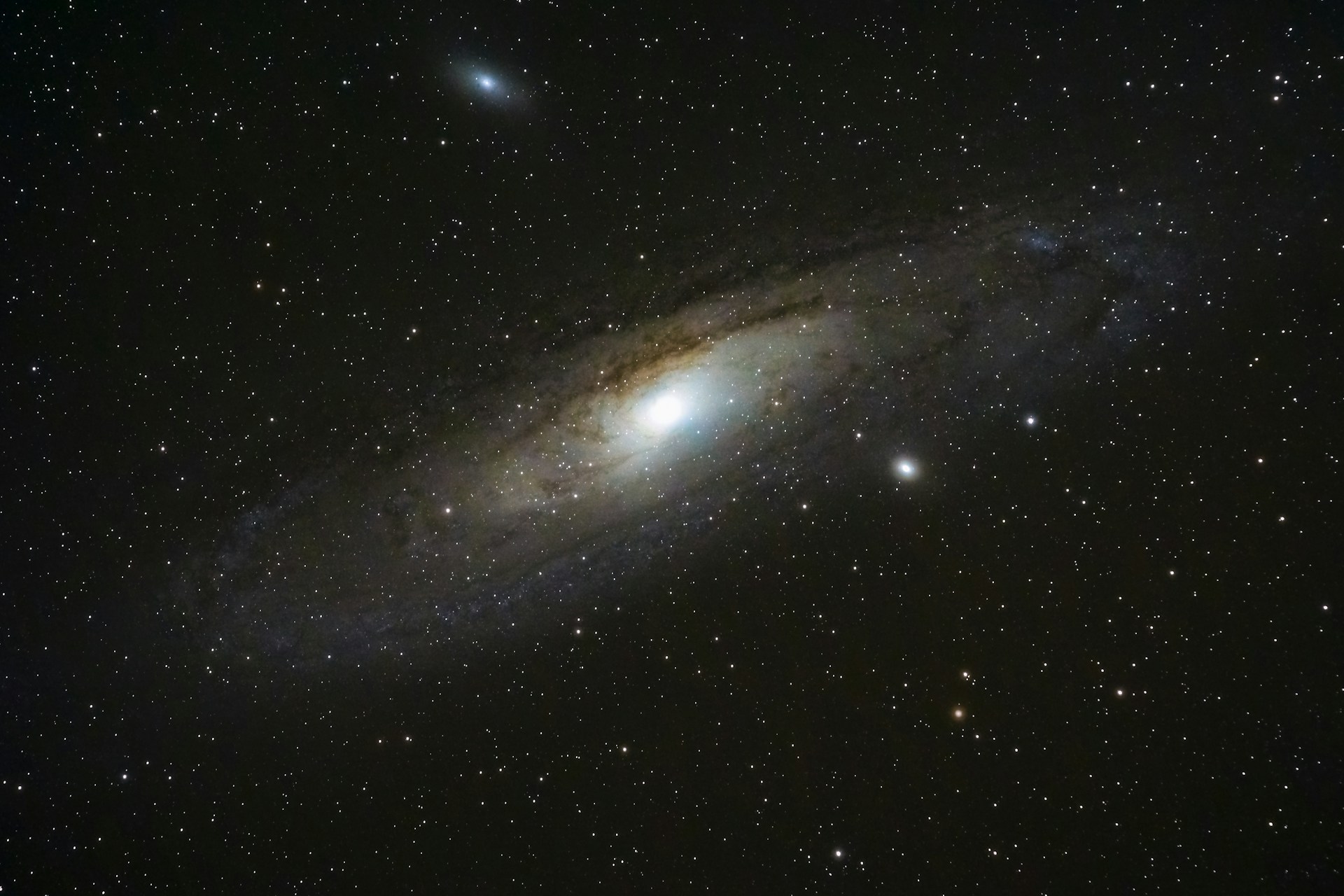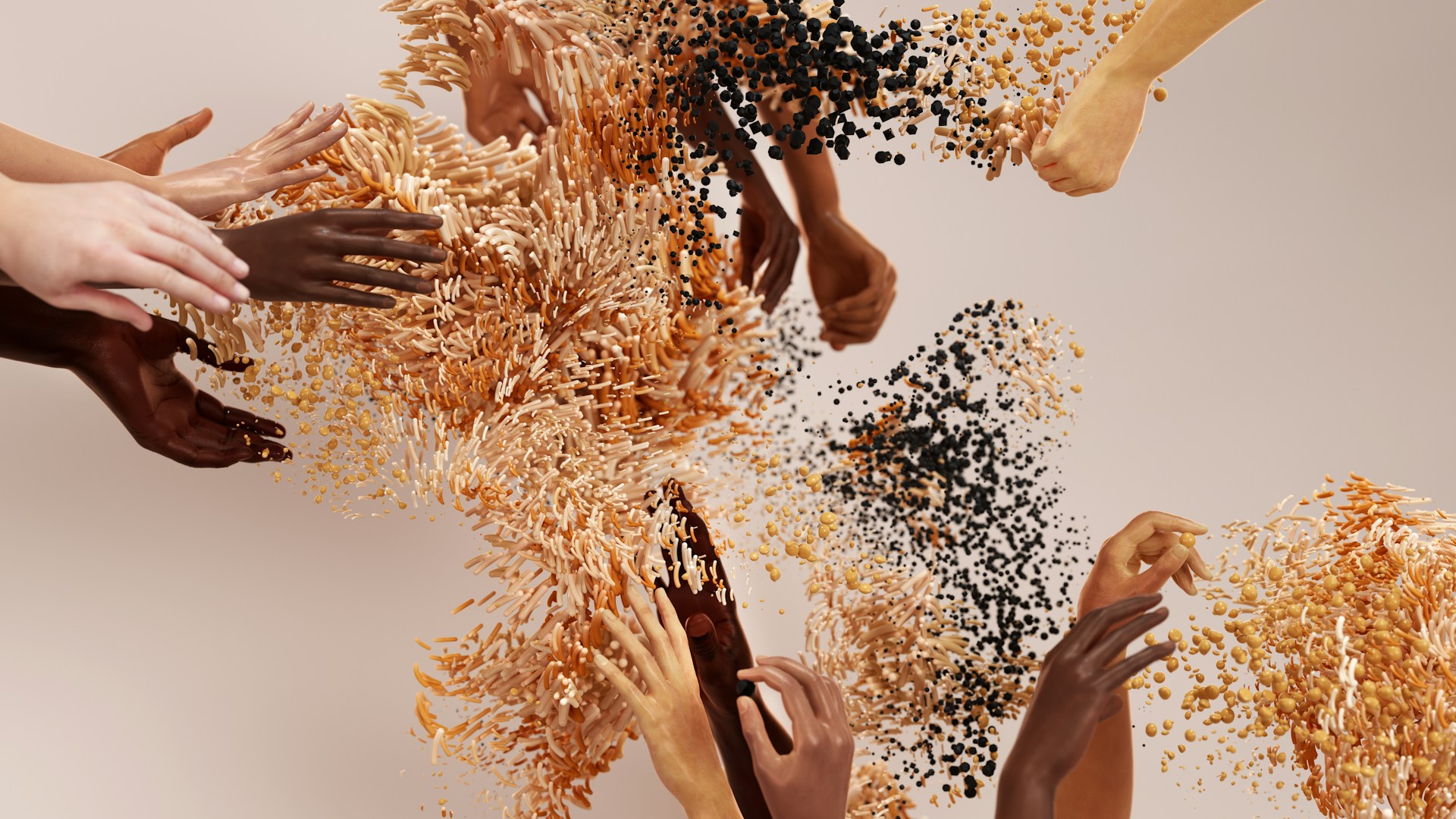Imagination and empiricism in science may be actually be two sides of the same coin. Photo credit: Florentine Pautet via Unsplash
How can science fiction—face-paint, prosthetics, and all—help us understand the origins of life on earth?
Aliens, monsters, and pre-historic beasts have been the subject of humanity’s greatest stories. Our capacity to imagine alternate forms of life has always been a great source of entertainment. Historically, it has also inspired investigation into the history of life, and provoked thought about what kinds of life forms can exist. Biology, however, no longer relies on imagined monsters to suggest the forms of our ancestors. Instead, it focuses on evidence from fossils and from currently living organisms—but is removing imagination a good approach? How can science fiction—face-paint, prosthetics, and all—help us understand the origins of life on earth?
Speculative biology is a science-fiction genre that explores possible life forms of the past and future—if you’ve ever seen illustrations of hypothetical life forms from the early days of Planet Earth, or read about how humans might evolve over millions of years of spaceflight, you’re already familiar with a bit of speculative biology! Lots of sci-fi tv shows explore this too—frequently by sticking some prosthetics or CGI on an actor and talking about how their ‘freezing/boiling/jungle-filled/desert home planet’ causes them to need antennae, or something equally silly.
…science fiction [is] a warning to humanity to resist our controlling, hubristic nature.
Not all speculative biology is so light-hearted, however. Some authors have used the genre as a tool to examine human nature. All Tomorrows, by C. M Kosemen, imagines dizzying (and horrifying) future forms created largely by selective breeding of humans at the hands of a sadistic race of aliens. Fingers twisted and webbed into gigantic sails; limbs lost to create elongated worms; flattened to blocks of tissue—humans in this future have suffered a cruel fate. The body horror of All Tomorrows is hard to read as anything but a cautionary tale about meddling with nature and ‘playing god’ with natural forms. This calls to mind the controversial topic of genetic engineering and modification, like manipulation of crop plants to resist pests, or breeding animals to increase meat production. Since Mary Shelley’s Frankenstein, body horror has been used to ward against man’s tendency to meddle with nature; thus, Kosemen’s anti-genetic manipulation message fits neatly within the long history of science fiction as a warning to humanity to resist our controlling, hubristic nature.
Other science fiction authors conduct thoughtful and creative enquiries into the possible diversity of life, considering how organisms could be shaped by worlds different to our own. Some texts, like Dougal Dixon’s After Man, are composed as ecological atlases. With natural shifts in plate tectonics and planetary climate systems that produced biomes subtly different from our own, After Man imagines a future millions of years post-humanity, envisioning the trajectory of evolution from current species to new, future ones. Dixon considers the ecological conditions that might be present in such a world and proposes reasonable, if still hypothetical, forms. All Yesterdays by John Conway, C. M. Kosemen and Darren Naish is an art book that takes a similar approach. Here, the authors present drawings of dinosaurs and other pre-historic animals with a more imaginative view; proposing hypothetical, alternative forms that challenge stereotyped appearances while remaining plausible within paleontological evidence.
Chubby-cheeked dinosaurs with heavy brows and bright plumage might seem implausible at first glance, but the book highlights the amount we don’t know about an animal when working only from the fossil record. The authors further illustrate this point by showing how traditional approaches to paleontological reconstructions would imagine still-living animals from only their skeleton, highlighting the immense diversity lost in such approaches. While both After Man and All Yesterdays are works of fiction, they serve as clear examples that speculative biology can be used to explore our methods of investigating past life forms. Speculative biology, then, is a literary and artistic genre with many sides; moral allegory, rational exploration, and light-hearted sci-fi world-building.
Xenobiology, in contrast, is a scientific field exploring how we can manipulate biological (usually cellular) systems, and what these manipulated systems can tell us about the governing principles of life at a biochemical level. Many xenobiologists hope that through these manipulations, we might glean insights into the origin and evolution of life. For instance, experimenting with changing the structure of DNA can create a cell with genetic material that is fundamentally different to our own, which might help us understand how flexible our genetic material is to changes, and if alternative forms might have existed early in our evolutionary history.
Xenobiology frequently overlaps with astrobiology—the study of potential life elsewhere in the universe. Astrobiology considers extreme environments found here on Earth—deep-sea vents, extreme temperatures, and hyper-acidic or hyper-saline pools are all good examples—and explores how adaptations to these environments could mirror adaptations to extra-terrestrial environments. Astrobiology, too, considers early life on Earth. Classic experiments such as the Miller-Urey experiment have sought to simulate the chemical and physical makeup of pre-life Earth, and see if essential components for life could have arisen naturally.
In brief, scientists had proposed that a small number of simple chemicals were present in the atmosphere of Earth before life evolved. Miller and Urey placed these chemicals in a sealed system of glass beakers and simulated the heat and electrical charges that they suspected were also present at the time. After several days, the contents were tested and the scientists found complex, organic molecules like those in our cells. The veracity of many of these experiments remains under question—while the Miller-Urey experiment was successful in generating life’s ‘building blocks’ from a sealed environment of simple chemicals, arguments still continue over whether the starting set of chemicals accurately represents the conditions present in an early Earth. Regardless, astro- and xeno-biology present hypothetical living systems that could have shaped the form of early life on Earth. Both, therefore, flow into palaeontology—the study of ancient life—and collectively form the basis of our understanding of life’s origins and evolution.
A scientist’s first instinct might be that these fields have little in common. Speculative biology is a form of fiction—it’s fundamentally made-up, and doesn’t rely on evidence to form concepts of life. It’s very easy for a scientist to reject speculative biology as frivolous at best, and actively false at worst. Scientific misinformation is rife—in what has been called the ‘post-truth’ era, narratives around scientific fact often draw more attention and belief than the scientific fact itself. Palaeontology (the study of ancient life) can often be a target for misinformation; religious narratives about the origin of life, culturally treasured stories of dinosaurs and early monsters, and emotionally powerful feelings about humanity’s place in the universe all come into play when science attempts to communicate information about new paleontological discoveries. It’s easy to understand why those committed to studying hypotheticals at the foundation of life on earth might be unhappy at being compared to science fiction authors who choose to create myths of alien and alternative-Earth creatures.
Dismissing speculative biology, however, could actually come at a cost for xeno- and astro-biologists. Rejecting creativity and speculation in favour of bare-bones data chasing risks missing out on incredible insights; a bit of creativity is required to see a flight pattern in a vast set of geographical points, or to understand how fragments could fit together to form a skeleton. Creative thinking also serves as an excellent test to a hypothesis.
It’s all too easy to call imagined aliens ‘impossible’—considering why they’re impossible can prompt reflection on long-standing assumptions. For example, Pere Alberch (a key player in the early field of embryology and evolution) wrote an examination of ‘monster myths’ where he questioned why we see three-headed monsters in stories, but never in real-life examples of congenital defects. He concluded that congenital defects which result in two heads were relatively common, but three heads had never been observed. This led to revelations in the field about the way embryos develop. We now understand that accidentally splitting the body in half is easily done during development, but splitting the body in three would be extremely tricky and require a change in the underlying mechanisms of embryo-genesis. Alberch’s open-mindedness and willing to consider ‘impossible’ hypotheticals was crucial for much of our modern-day understanding of developmental biology.
Rejecting creativity and speculation in favour of bare-bones data chasing risks missing out on incredible insights…
Another key example for speculative biology strengthening ‘real-life biology’ can be seen in a work that’s already been mentioned: All Yesterdays. A core theme of the book is the criticism of fossil reconstructions as overly conservative to fossil data and inconsistent with the variation we know to exist in nature. Proposing the appearance of a dinosaur based solely on bone fossil data, for instance, isn’t inherently incorrect, but it all too commonly results in a skeletal form stripped back to only limbs, teeth and claws. Applying critical thinking and comparing to the forms of living animals, it becomes clear that ligaments, muscle, fat and pigment are all missing from these models. Creativity is essential in envisioning a more realistic view of a dinosaur—even though it is less evidence based. Despite being an atlas of fictional forms, All Yesterdays was actually received well by the scientific community, and several reviewers have suggested it may help potential scientists challenge myths about dinosaurs and aid understanding of the challenges of fossil reconstruction.
More impressively, the author of All Yesterdays later released a crowd-sourced collection of speculative imaginary extinct animals (All Your Yesterdays). One contribution, from John Meszaros, was ‘Ceticaris’, an anomalocarid (an extinct group of animals from the Cambrian era, thought to be among the earliest relatives of modern-day arthropods, including crustaceans and insects). Meszaros, aware of the ecological conditions of the Cambrian seas and noticing the lack of filter-feeding organisms in the fossil record, hypothesised an anomalocarid able to filter-feed, with long tendrils trailing from it’s mouth to catch microscopic prey. Not long after, a paper emerged in which, for the first time a fossil of an anomalocarid was discovered to have in fact been a filter feeder. Fittingly, the new clade of anomalocarids established by the paper was named the Cetiocaridae, after Meszaros’s original species name.
Speculative biology and xenobiology might, therefore, have more in common than previously thought. A dedication to data and precision is of course still admirable and aspirational in science, and there are certainly aspects of speculative fiction that do a better job of entertaining than of disrupting the scientific status quo. At its best, however, speculative biology can be a call for a more inventive, question-based approach to be integrated into xenobiology. It might be time to dare to dream of the aliens.





